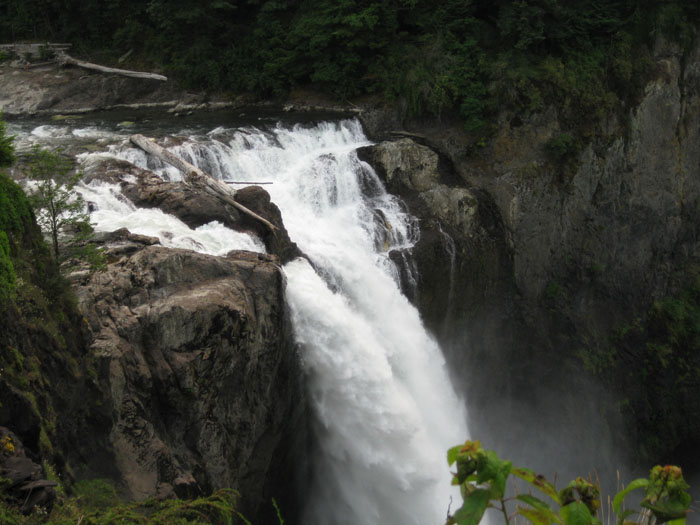I’m excited to offer you a glimpse of a wonderful park in Texas, written by one of my travel writer friends there. Colorado Bend State Park is a two-hour drive from Austin. –Heather
By Beverly Burmeier
www.beverlyburmeier.com
www.goingonadventures.com
www.stripedpot.com
http://tinyurl/bevtrvl

Photo by Larry and Beverly Burmeier
Towering rock canyons, more than 350 caves, and two spring-fed creeks make Colorado Bend State Park an absolutely fabulous place to explore. With 16 miles of hiking trails and 14 miles suitable for mountain biking, there are plenty of opportunities for visitors to enjoy nature at its best, including beautiful scenery along river trails and at Gorman Falls. I was surprised by the various recreational opportunities available at this central Texas park for birding, fishing, hiking, picnicking, camping, and photography.
Located along six miles of Colorado River frontage, Colorado Bend is a large state park, covering 5,328 acres. Partly because of its size, the intent is to keep it natural and easy to care for, says Park Superintendent Cory Evans. At present it is one of the lesser developed state parks, although future plans may change that. Primitive tent camping is allowed in 38 numbered sites, and there are two backpack areas where guests can pitch tents. No electricity is available, which makes it a great getaway from the workaday world.

Photo by Larry and Beverly Burmeier
Native pecans, ferns, and cacti are abundant in the park, and beautiful wildflowers sprout up in the spring. Wildlife includes coyotes, bobcats, and mountain lions—although most visitors aren’t likely to encounter these species. White-tail deer, armadillos, and squirrels are more common. You might also see wild turkeys, endangered golden-cheeked warblers (if you’re lucky), black-capped vireos, red-tailed hawks, and eagles (they nest on the canyon walls).
Several geological features in the park are unique to this region. Spicewood Springs is a popular hiking trail with numerous creek crossings that leads to a refreshing creek where families often picnic and swim. Adding to the beauty of this spot are the painted rocks, formations colored by minerals seeping through.
On weekends, staff will take visitors on a two-hour guided tour to spectacular Gorman Falls on the western bank of the Colorado River, approximately 10 miles above Lake Buchanan. This impressive 90-foot-high waterfall, tumbles over a cliff and mists ferns and other lush vegetation as it descends. Comprised of travertine, the top layers of calcium deposits are extremely fragile, so the area is protected. A deck allows amazing views of the falls and the meandering Colorado River directly behind the viewer.

Photo by Larry and Beverly Burmeier
Also available are guided cave tours. Gorman Cave is the 40th largest cave in the state, and you can explore with staff on weekends or belly-crawl 800 feet into the cave on a self-guided tour. Other than the falls and cave, visitors are free to explore and enjoy the park—on its own primitive terms.
March is the busiest month—with April next–because that’s prime time for white bass fishing and birding (214 species of birds have been identified in the park). Also flowers are beginning to bloom, and the weather is generally agreeable for camping or hiking.
Originally an old Indian camp, the site near Gorman Falls is protected for archeological study. During the 1950s-1970s that area was a fishing camp and RV park. The state bought the land in 1984, adding more land from the former Lemons Ranch in 1987. These areas were combined and opened to the public as Colorado Bend State Park in 1988. Still, only 40,000 visitors per year journey the 18 miles from San Saba, through the tiny town of Bend, and over gravel roads to reach the park. But, it’s definitely worthwhile to discover the natural attractions of this Hill Country jewel.










